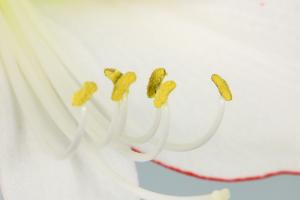A Picture of a Plant Cell
Plants are incredibly complex organisms with intricate internal structures. At the heart of every plant is the plant cell, a unique and fascinating structure that contains all the specialized organelles and molecules necessary for life. In this article, we will take a closer look at the plant cell and explore its internal components in detail.
The Cell Wall
The outermost layer of the plant cell is the cell wall. This rigid structure is made up of cellulose and provides support and protection for the cell. The cell wall also helps the cell maintain its shape and prevents it from bursting or collapsing under pressure. While the cell wall is essential for many plant functions, it does not play a role in cell division or reproduction.
The Nucleus
The nucleus is the control center of the plant cell. It is surrounded by a nuclear envelope and contains genetic material in the form of DNA. The DNA is organized into chromosomes, which carry the instructions for all the cell's functions. In addition to its role in genetic information storage, the nucleus also regulates gene expression and oversees cell division.
Organelles: Mitochondria, Chloroplasts, and Vacuoles
Inside the plant cell, there are several specialized organelles that perform specific functions. The mitochondria are responsible for producing energy through cellular respiration, while the chloroplasts capture light energy to carry out photosynthesis. The vacuoles store water, nutrients, and waste products and help maintain the cell's turgor pressure. Each of these organelles is unique and essential to the functioning of the plant cell.
The Endoplasmic Reticulum and Golgi Apparatus
The endoplasmic reticulum (ER) is a network of membranes inside the cell that supports protein and lipid synthesis. The rough ER has ribosomes attached to its surface, which help produce proteins, while the smooth ER is involved in lipid metabolism. The Golgi apparatus is responsible for processing, packaging, and transporting proteins and lipids to their final destinations within or outside of the cell. Together, these organelles ensure that the cell produces and functions properly.
The Cytoskeleton
The cytoskeleton is a network of protein fibers that provides support and structure for the cell. The cytoskeleton is composed of microtubules, microfilaments, and intermediate filaments, all of which have unique roles in maintaining cellular shape and integrity. The cytoskeleton is also involved in cell division, movement, and intracellular transport.
In conclusion
The plant cell is a fascinating structure with many complex and specialized components. Each of these components has a unique role to play in the functioning of the cell, and the cell as a whole is responsible for maintaining the structure, function, and productivity of the plant. Understanding the plant cell is essential for understanding the physiology and biology of all plant life on our planet, and ongoing research into plant cells continues to shed light on the mysteries of life itself.

 how many times do yo...
how many times do yo... how many planted tre...
how many planted tre... how many pine trees ...
how many pine trees ... how many pecan trees...
how many pecan trees... how many plants comp...
how many plants comp... how many plants can ...
how many plants can ... how many plants and ...
how many plants and ... how many pepper plan...
how many pepper plan...






























